This website is dedicated in loving memory to Late Santa Singh Panesar & Late Ravinder Singh Panesar
Moela Wahid Pur is a village situated in the east of Punjab between Jalandhar, Hoshiarpur and the Ropar districts. It is located in the foot hills of the Shivalik Hills which is also known as the Garden of Punjab. The village is on the GT road from Hoshiarpur to Chandigarh and is about 3km from Garhshankar and 11km from Mahilpur.
Garhshankar town used to be the capital of King Shankardas. In the west of Garhshankar there is a canal that goes to Adam Pur Doaba and 3km from Garhshankar is the village Moela Wahid Pur. During the Mughal rule this village was the centre of Rajput Muslims. In the east of the village there used to be large Pipal trees (Ficus Religiosa) and in the open ground, more than 300 girl dancers (Kanjarian) would come to dance there. At that time, there were two Rajput Muslim brothers known as Moela Khan and Wahid Khan who were the heads of the village. One part of the village was famous with the name 'Wahid' and the other part was famous with 'Moela' - these names gave rise to the village name 'Moela Wahid Pur'.
Freedom fighter leader S. Partap Singh Canadian and his fellow freedom fighters were based at Mahilpur town. Mahilpur Doaba used to be the headquarters of freedom fighters before the British rule. With the downfall of Mughal rulers they occupied and destroyed the very fertile land of Moela Wahid Pur. They appointed the ruler of their gharrana (dynasty) called Bains.

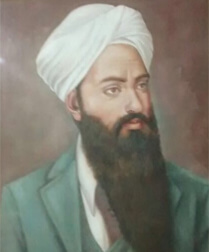
Jathedar Partap Singh Canadian was born on 27 October 1882 in Moela Wahid Pur Teh, Garhshankar to parents Mr Deva Singh Bains and Mrs Jaswant Kaur. Partap Singh Canadian was a true believer of Sikhi (Sikhism). He started early education in a primary school in Moela Wahid Pur then did matriculation in Urdu schools in Garhshankar and Rahon.
In April 1905, Partap Singh Canadian went to Canada at the age of 22 and started making gurdwaras in Canada and America and began working for the welfare of Sikhs. He built a gurdwara in Stockton, California and requested Sant Teja Singh to come to Stockton. Sant Teja Singh came to Stockton in 1912 and together they set up Doaba Sikh American Education Society and also laid the foundation of another gurdwara. Jathedar Partap Singh Canadian donated 70000 dollars and Bhai Harnam Singh Bhajjal donated 60000 dollars to the gurdwara while many other Sikhs donated large amounts of money. Through the Sikh Educational Conference Hoshiarpur, they also donated 64000 dollars to open Khalsa High School in Purheeran district Hoshiarpur.
In September 1912, S. Partap Singh Canadian returned to Punjab, India. At that time King (Raja) Mohinder Partap Singh, Bhai Dasondha Singh Dhada and their group (jathas) were visiting neighbouring countries of India and propagandising against British rule and getting ready for the revolution.
In 1913 during the wheat harvesting season, Gaddari Babe came to India from Canada and America and took their responsibilities. They met Jathedar Partap Singh Canadian, but unfortunately as someone spied to the British rule they were arrested before any action took place. S. Partap Singh Canadian and Pandit Salig Ram of Moela Wahidpur were arrested in 1914 under the case of conspiracy against British rule and were put in a dark cell (Kaal Kothri) where the British rule tortured them. The British rule threatened and bribed Pandit Salig Ram to be a witness, but lion- hearted Pandit Salig Ram refused to expose any secrets or accept the offer. In March 1916, they were all released from jail but also banned from leaving the village boundary.So, they later set up a village Panchayat and started solving issues of the local people.
In February 1920, when S. Partap Singh Canadian was released from prison again, Jagtar Singh Sodhi came to see him from Anandpur Sahib and invited him to Anandpur Sahib. Jathedar Partap Singh decided to go to Anandpur Sahib on Hola Mahalla and all the Sodhis (Sodhi Moti Singh, Sodhi Pritam Singh and Sodhi Jagtar Singh) welcomed him with great respect. They decorated elephants and rode on them in the mela in an anarchy. While riding they noticed that women were sitting on roofs of their houses facing the bazaar and gundas (goons) and people with bad thinking were roaming around and saying rude things to them. People were doing illegal activities at that time and the Mahants (fake priests) were controlling all the religious places and people were scared to go there.
One night Tikka Jagtar Singh invited Jathedar Sahib to his house for dinner. Jathedar Sahib accepted the invitation but refused to eat anything in his house and instead criticised the bad things happening in Anandpur Sahib during that time. S. Partap Singh Canadian created a new organisation under the leadership of S. Pritam Singh Sodhi called Dushat Daman (Destroyer of The Evil) Akali Jatha, the group was created to end all the evils with the help of police. After returning from Anandpur Sahib, Jathedar Sahib wrote a letter to all the important people around Garhshankar for a meeting at Gurdwara Tahli Sahib Goand Pur to brief about Anandpur Sahib. At the meeting, he chose three members for a committee: Bhai Daya Singh Langeri, Bhai Moola Singh Bahowal and Diwan Pohlo Ram. The three were instructed to go to Anandpur Sahib to gather information of bad happenings in the gurdwaras occupied by Mahants and to report back so they can free all the religious places. The Shiromani committee thought about controlling all the religious places by going to court as it was a hill area dominated by the Mahants.
In January 1922, all the Doaba Akali Jathedars passed the resolution on how to free all the religious places from the Mahants without the help from outside and the news spread rapidly among the jathedars. They sent some people to gather important information from the worshippers of Mahants and asked them to report back to the committee after every three days. In those days there were no other source of transport apart from walking, nevertheless Giani Gurdit Singh showed his faithfulness and reported back to the committee regularly. After receiving the reports, they organised groups of 200 Sikhs under the leadership of one or two jathedar(s) and on the other side the Mahants got angry when they heard about the new resolution.
On the midnight of Lohri, from the groups of 200 Sikhs only 127 arrived and were led by Jathedar Partap Singh Canadian and another group was led by Sant Harnam Singh Jian Wale. In a meeting they selected suitable Sikhs and each were given appropriate responsibilities. Responsibilties were given to the following people to free Anandpur Sahib and Kiratpur Sahib from the Mahants and to take control: Bhai Piara Singh Langeri, Jathedar Moola Singh Ji 'Jarnail' (General) Bahowal and Jathedar Harnam Singh Bhajjal. The Sikhs fought against the Mahants and sacrificed their lives to free all the gurdwaras and saved from being the second Nankana tragedy. In each muhim (campaign) Jathedar Partap Singh Canadian of Moela Wahidpur stayed with them.
Jathedar Partap Singh Canadian wrote an important letter and asked Baba Gurdit Singh of Garhshankar to deliver the letter to the head of Teh. Garhshankar (Mr Majna) to discuss some important issues with people at Sant Kutia Jian.
Everyone arrived on time for the meeting, these people were from:
In the meeting, they discussed about the next programme which was to gather on the night of Lohri at the bank of Sutlej River.
Some candidates were selected to serve the Sikhi duties, these were:
1) Head Jathedar Shri Keshgarh Sahib JATHEDAR PARTAP SINGH CANADIAN
2) Deputy Jathedars: JATHEDAR MOOLA SINGH BAHOWAL, JATHEDAR JARNAIL SINGH MORANWALI, JATHEDAR LABH SINGH JASSOWAL
3) Head Granthi (priest)- GIANI MEHAR SINGH LANGERI. Secretary- PURAN SINGH BARHIAN
Out of 127 Sikhs, 77 went to Takhat Shri Keshgarh Sahib to get the seva (duties) of the gurdwara under the leadership of Jathedar Partap Singh Canadian. 32 Sikhs were given to Jathedar Moola Singh Bahowal and the rest to Jathedar Jarnail Singh Moranwali to take control of gurdwara Shish Ganj Sahib. All the Jathedars and their jathas (group) managed to take control of these gurdwaras without bloodshed and they started serving the gurdwaras. On the other side, the message from Jathedar Moola Singh Bahowal and Jathedar Labh Singh Jassowal was received that they got control of gurdwara Shish Ganj Sahib without any trouble. Jathedar Moola Singh Bahowal suggested that five Sikhs should Jaikara (chant) Guru's name every half an hour, moving from one gurdwara to another, to let people of Anandpur Sahib know that the Akali workers have reached the gurdwara. On the morning of 14 January the Jathedars received a message from the Shiromani committee congratulating them on their success.
Jathedar Partap Singh Canadian then remained the Head Jathedar of Takhat Shri Keshgarh Sahib and Anandpur Sahib for about 20 years.
All over Doaba, people were arriving at Anandpur Sahib for the yearly Hola Mohalla mela. About 75 jathedars from Hoshiarpur, Jalandar and Kapurthala had a meeting to reform Kureetian (bad things) and a title 'Jarnaili' was given to one jathedar to take control of the whole mela. Jathedar Partap Singh Canadian and Jathedar Moola Singh Bahowal were given 'Jarnaili' (title) from the Takhat Sahib. Jathedar Moola Singh was given a horse, a Jarnaili pushak (General's uniform), a gold label and was also asked to shoulder the duties of looking after the mela.
A Kar Khas Jatha was set up and their duties were to catch and punish people behaving anti-socially- the drunk, thieves and people who were saying rude things to others so that they would not do bad things again.
The gurdwara is located in the praah (open grounds) of Garhshankar where it once used to be an unused land filled with trees and thick bushes.
At one time, Jathedar Partap Singh Canadian was coming from Shri Anandpur Sahib on a horse and as he passed the jungle at night he heard the noise of badmash (goons). The badmash were coming from the railway station and were saying bad things to women who were passing, trying to loot their jewellery and threatening them to hand all their valuables. Jathedar Canadian got off his horse and pulled his sword and challenged the badmash, the badmash got scared and ran away. The next day, Jathedar Partap Singh invited his colleague from village Chahilpur and Moranwali for a meeting to discuss the need of a gurdwara and rest rooms for people to stay in at night. As everyone came to an agreement during the meeting they bought a land on the name of Jathedar Bhola Singh, however they were unable to do anything with the land as they were busy with their lives. After them, Sant Baba Sewa Singh Ji Naure Walian took the responsibility to construct a gurdwara in the memory of Bhai Tilku Ji.
(Content taken from the book 'ADARSHAK GURSIKH JEEVAN' handwritten by Mr Gurdial Singh 'Mahi,' BA LLB).
In the west of the village there is a large gurdwara Sahib called Gurdwara Manji Sahib. This historical gurdwara was named after the sixth Sikh Guru; Guru Hargobind Sahib Ji. It is blessed by the touch of Guru Hargobind Sahib Ji's holy feet. Next to the gurdwara, there is a historical place called 'Shaheed Singh Place' (Shaheedan Di Jagah) which was built in the memory of the Sikhs that were wounded and killed when coming from Bajwara Mission. This place has been blessed by Sahibjaade Ajit Singh, the eldest son of Guru Gobind Singh Ji.
Sant Baba Harnam Singh Ji Rodey Wale laid the foundation of the gurdwara with the help of a villager from Moela Wahir Pur called Mohammand Zumir Sahid.
Sant Baba Harnam Singh Ji also built ten other gurdwaras including at: AKALGARH, BEEHRAN, DAULTPUR, MEHINDPUR. Sant Baba Ji passed away on 11 June 1967.
Since then each year a mela called Jorh Mela has been taking place in the village in the memory of Sant Sahib. After Sant Baba Harnam Singh Ji Rodey Wale, the seva of the gurdwara Sahib was taken over by Sant Baba Harnam Singh Ji 108 Sri Nihang Singh Ji Rangpur Wale who completed building the Gurdwara. Sant Ji passed away on 29th December 2012.
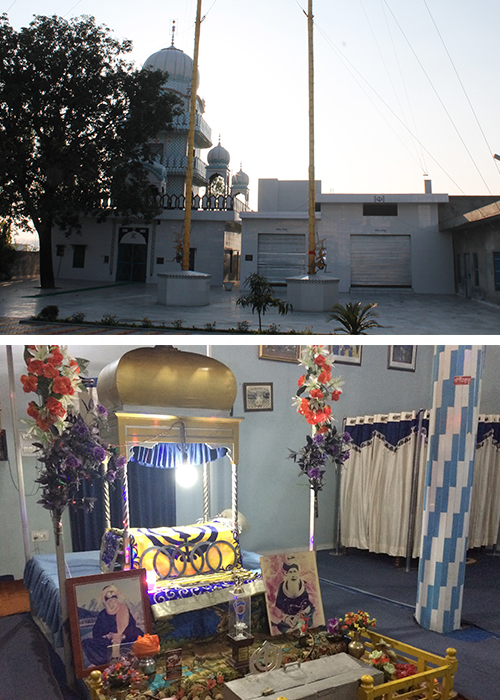
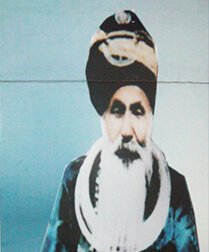
Sant Baba Harnam Singh Ji Rode Wale
Passed away
11th June 1967

Sant Baba Harnam Singh Ji Rode Wale
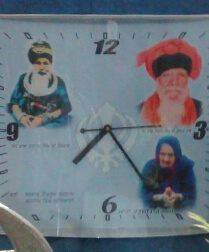
Bade Baba Ji, Shote Baba Ji & Mata Ji
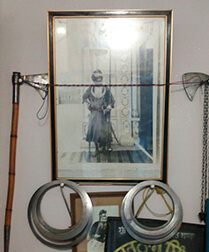
Sant Baba Harnam Singh Ji Rode Wale
Passed away
29th December 2012
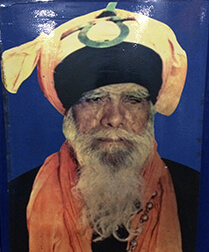
Sant Baba Harnam Singh Ji Rangpur Wale
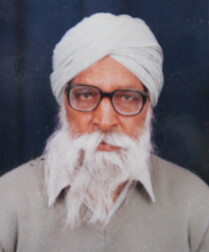
S. Ishar Singh Bedi was born on 5th July 1921 in Moela Wahidpur. His father's name was S. Dalip Singh Bedi and mother’s name was Mrs Pritam Kaur. S. Ishar Singh completed primary education in his hometown and then studied up to 8th class at Garhshankar.
At the age of 17, he was recognised by the British Military Officers as fit to take part in the Military Service. But, during his military training, which was during the Second World War, Mr. Bedi instead joined the Indian National Army (INA) led by Mr. Surbash Chander Bose and he started to fight against the British rule.
Mr Bedi was sent to prison by British rule for working against them and they blacklisted him. After the independence from the British rule, Mr Bedi joined the Indian Police Department in 1952. While working there he killed a dangerous dacoit Gakal, for which he received a reward of 500 rupees from the U.P Govt.
In 1972, Mr Bedi was also rewarded by Indra Gandhi, at that time the Prime Minister of India. After retiring from the police department, he returned to Moela Wahidpur and served the villagers as a sarpanch for 10 years.
ਨਾਮ ਮੋਿੲਲਾ ਵਾਿਹਦ ਪੁਰ ਏਦਾ,ਧਰਤੀ ਗੁੁੁਰੂਆਂ ਪੀਰਾਂ ਦੀ।
ਆਂਈ ਐਨ ਏ.ਦੇ ਯੋਧੇ ਨਾਲੇ ਬਬਰ ਵੀਰਾ ਦੀ।
ਪਿੰਡ ਪਹੁੰਚ ਗਏ ਸਮਝੌ, ਬੋਰਡ ਿਦਸੇ ਜਦ ਢਾਬੇਦਾ।
ਨਹਿਰ ਿਕਨਾਰੇ ਵਸਦਾ ਹੈ ਿੲਹ ਿਪੰਡ ਦੁਆਬੇ ਦਾ।
ਿਪੰਡ ਦੀ ਸ਼ਾਨ ਵਧਾਉਂਦਾ ਏਥੇ ਗੁਰੂਦੁਆਰਾ ਹੈ।
ਮੀਰੀ ਪੀਰੀ ਦੇ ਮਾਲਕ ਦਾ ਸਭ ਨੂ ਸਹਾਰਾ ਹੈ।
ਜੇਠ 29 ਨੂੰ ਲਗਦਾ ਏਥੈ ਮੇਲਾ ਬਾਬੇ
ਨਹਿਰ ਿਕਨਾਰੇ ਵਸਦਾ ਹੈ ਪਿੰਡ ਦੁਆਬੇ ਦਾ।
ਆਪਸ ਦੇ ਵਿਚ ਿਮਲਕੇ ਰਹਿੰਦੇ, ਸਭ ਧਰਮਾ ਦਾਂ ਪਿਆਰੇ।
ਤਾਂਈੳ ਏਥੇ ਕਾਿੲਮ ਮੰਦਰ,ਮਸਜਿ਼ਦ ਅਤੇ ਗੁਰੂਦੁਆਰੇ।
ਦਲਬੀਰ ਕਹੇ ਨਾਂ ਤੱਕਾਂ,ਮੰਜ਼ਰ ਖੂਨ ਖਰਾਬੈ ਨੂੰ।
ਨਹਿਰ ਕਿਨਾਰੇ ਵਸਦਾ ਹੈ ਿੲਹ ਪਿੰਡ ਦੁਆਬੇ ਦਾ।
ਸੇਵਾ ਕਰਦਾ ਰਹੇ ਸਦਾ,ਿੲਹ ਿਪੰਡ ਿਨਮਾਿਣਆਂ ਦੀ।
ਕਦੇ ਕਮੀ ਨਾਂ ਆਵੇ,ਏਥੇ ਸੁਘੜ-ਿਸਆਿਣਆ ਦੀ।
ਪੰਗਤ ਿਵੱਚ ਬਹਿ ਛਕਣ ਿੲਹ ਫੁਲਕਾ ਿੲੱਕੋ ਛਾਬੇ ਦਾ।
ਨਹਿਰ ਕਿਨਾਰੇ ਵਸਦਾ ਇਹ ਿਪੰਡ ਦੁਆਬੇ ਦਾ।
ਮੋਿੲਲਾ ਵਾਿਹਦ ਪੁਰ ਸ਼ਬਦ ਲਗਦਾ,ਿਵਲਖਣ ਰੱਖਦਾ ਹੈ।
ਏਸ ਨਾਮ ਨਾਲ ਿਪੰਡ ਨਹੀਂ ਹੋਣਾਂ,ਮੈਨੂੰ ਲਗਦਾ ਹੈ।
ਫੇਰ ਪਾ ਕੇ ਲੱਭ ਲੱਭ ਲਈਂਂਂ ਿਕਧਰੇ ਏਸ ਦੁਆਬੇ ਦਾ।
ਨਹਿਰ ਿਕਨਾਰੇ ਵਸਦਾ ਹੈ ਇਹ ਿਪੰਡ ਦੁਆਬੇ ਦਾ।
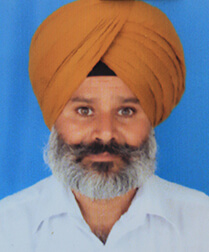
This kavita was written by Mr Dalbir Singh